Scope Statistics tool
The Scope Statistics tool is used for the statistical evaluation of Scope projects. The tool is called with the Scope Statistics command in the context menu of the respective Scope project.
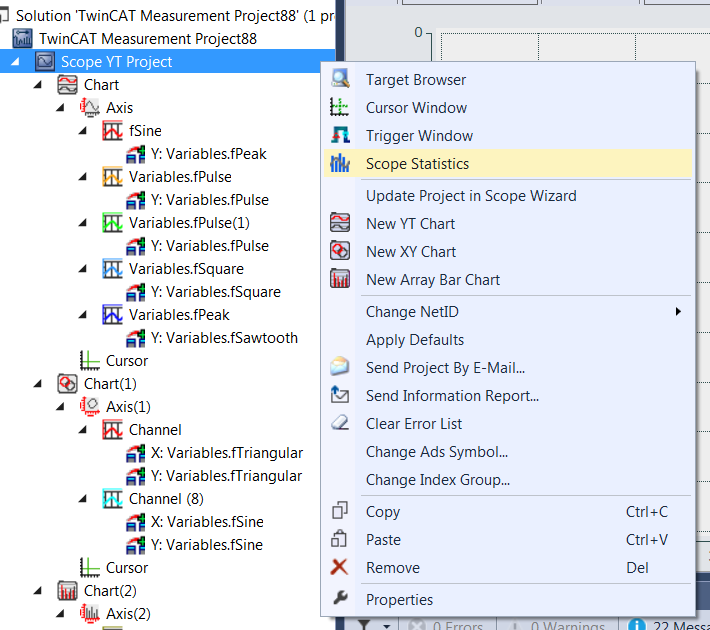
The statistics tool has seven different tabs for different topical areas.
General
The General tab contains general information regarding the Scope project and provides an overview of the elements contained therein.
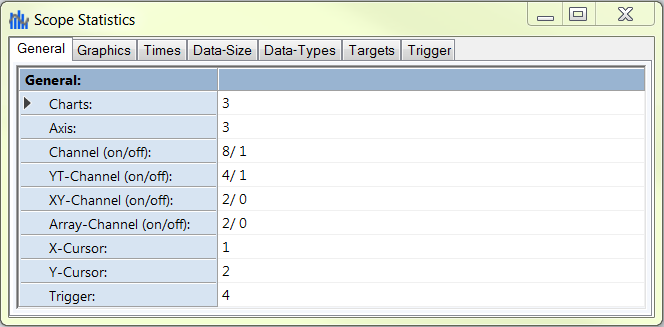
Charts | Number of charts in the project. |
Axis | Number of axes in the project. |
Channel (on/off) | Number of channels in the project that are enabled (on) or disabled (off) respectively. |
YT-Channel (on/off) | Number of YT channels in the project that are enabled (on) or disabled (off) respectively. |
XY-Channel (on/off) | Number of XY channels in the project that are enabled (on) or disabled (off) respectively. |
Array-Channel (on/off) | Number of array channels in the project that are enabled (on) or disabled (off) respectively. |
X-Cursor | Number of X cursors in the project. |
Y-Cursor | Number of Y cursors in the project. |
Trigger | Number of triggers in the project. |
Graphics
The Graphics tab contains information on the graphic properties of the respective project, as these affect the drawing performance.
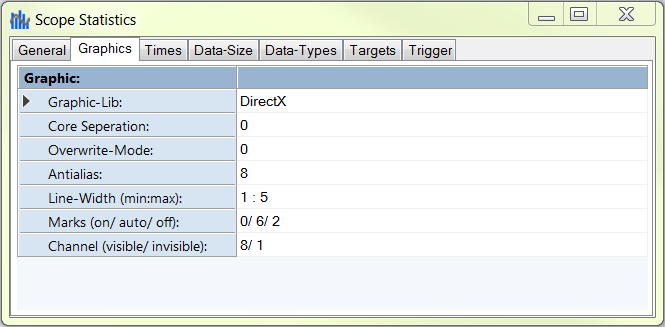
Graphic-Lib | Graphic library currently in use. |
Core Separation | Number of charts that use core separation. |
Overwrite-Mode | Number of charts for which the overwrite mode is activated. |
Antialias | Number of charts for which the "antialiasing" function is activated. |
Line-Width (min:max) | Minimum and maximum set line width of the channels. |
Marks (on/ auto/ off) | Number of channels for which the marks are activated (on), set to automatic (auto) or deactivated (off) respectively. |
Channel (visible/ invisible) | Number of visible or invisible channels respectively. |
Times
The Times tab provides information on the time settings of the project.
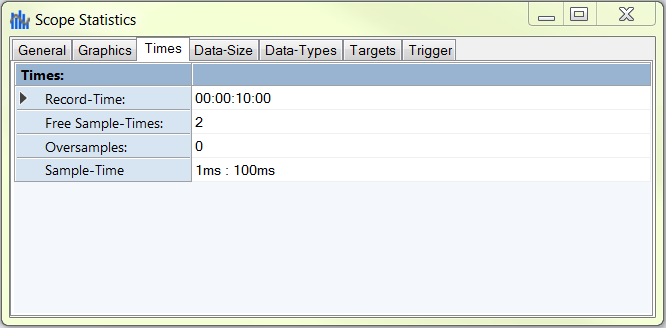
Record-Time | Set recording time of the project. |
Free Sample-Times | Number of channels for which the sample state "FreeSampleTime" is set. This means that for these channels a free sampling rate has been set that is longer than the TaskSampleTime. |
Oversamples | Number of channels for which oversampling is activated. |
Sample-Time (min:max) | Minimum and maximum set sampling rate within the project. |
Data-Size
The Data-Size tab contains information about the memory sizes.
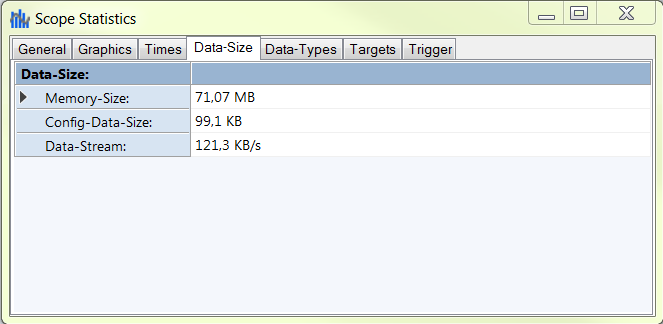
Memory-Size | File size of the complete recording. |
Config-Data-Size | File size of the configuration file. |
Data-Stream | Data stream during the recording. |
Data-Types
The Data-Types tab contains information about the data types within the Scope project.
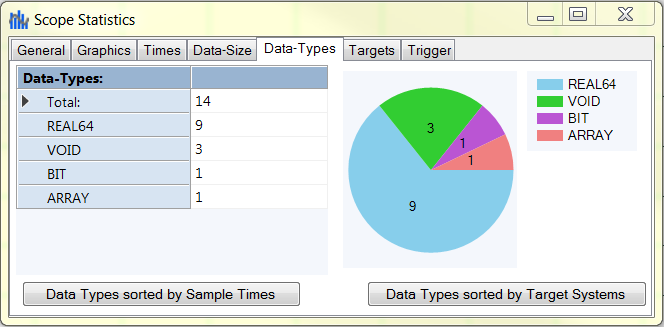
The various data types of the channel acquisition are illustrated in a table and as a pie chart. Note here that in the "ARRAY" line only the arrays of the array bar chart are listed. Other arrays, for example those used for oversampling purposes, are listed under the data types of their element.
To obtain a detailed overview, a table can be called via the Data-Types sorted by Sample-Times button in which the data types are listed in order of sampling rate.

The data types sorted according to target system are illustrated in a table via the Data-Types sorted by Target-System button.

Targets
The Targets tab contains information on the target systems contained in the project.
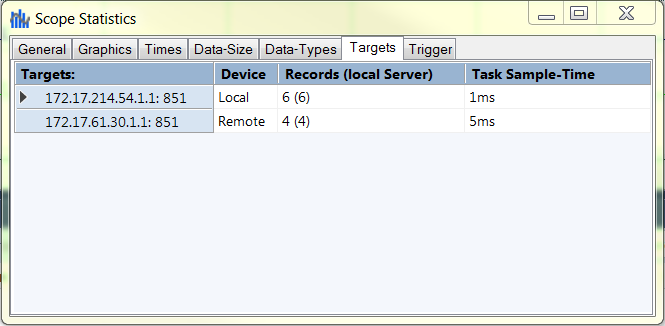
The following data are provided for each target system:
Targets | AMS-NetId and target port of the target system. |
Device | Information about whether the system is a local or a remote access system. |
Records (local Server) | Total number of records and the number of records on the local Scope Server. |
Task Sample-Time | Task sample time for the respective target system. |
Trigger
The Trigger tab contains information on all triggers that exist in the project.
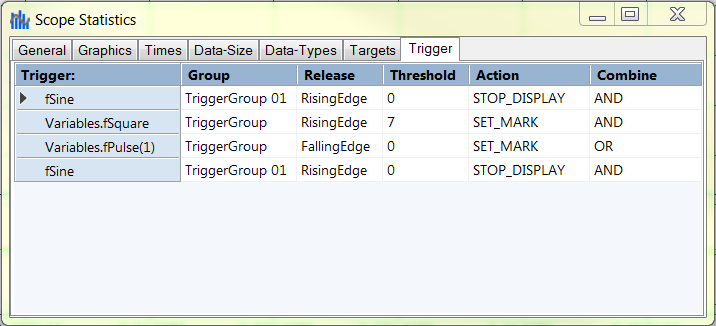
The following data are displayed for each trigger:
Trigger | Associated channel whose state is to be tested for the selected trigger conditions. |
Group | Trigger group to which the respective trigger belongs. |
Release | Indicates whether the trigger condition is a rising or falling edge. |
Threshold | Limit value of the trigger condition. |
Action | Trigger action that is executed when it is triggered. |
Combine | Selected linking options to the other trigger conditions. |